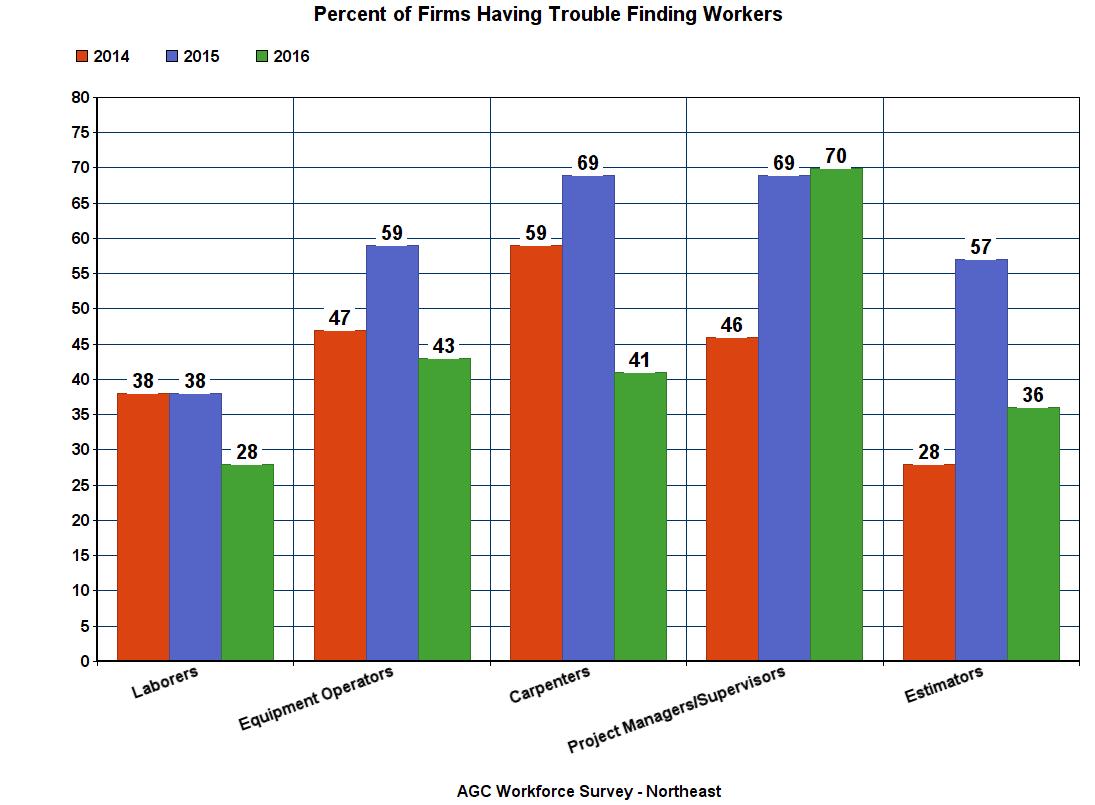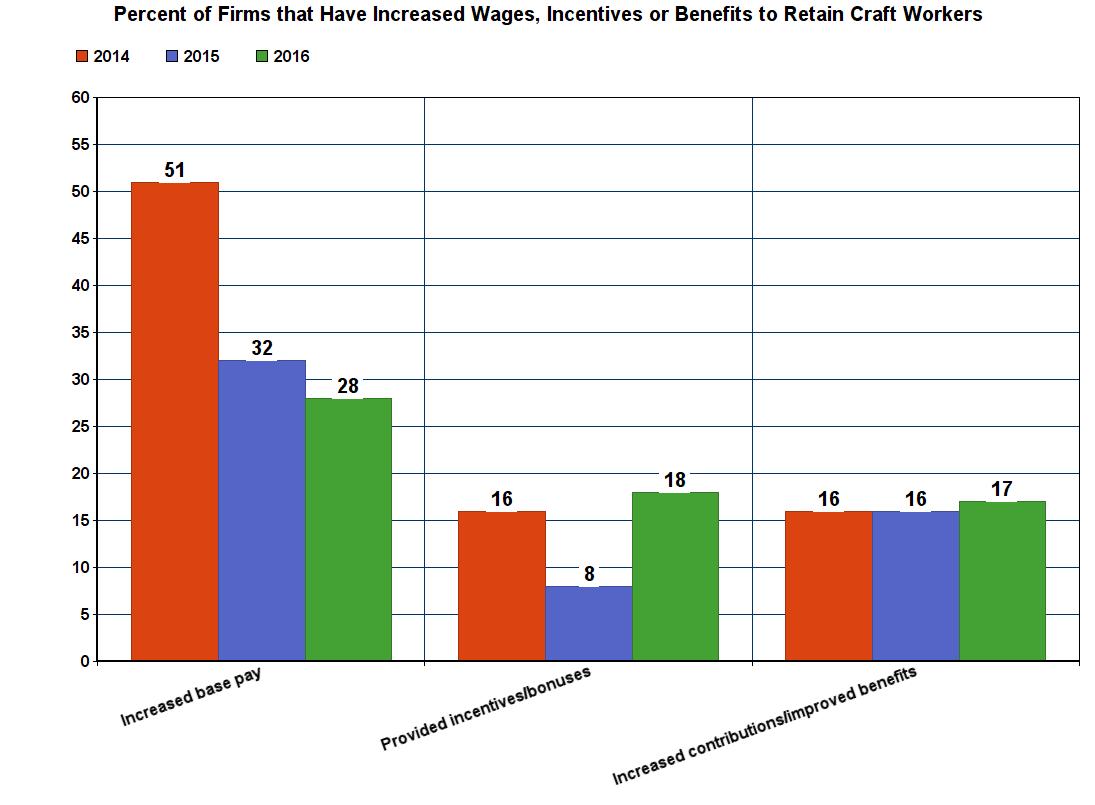- Who We Are
-
Our Work
- Educational
- Senior Living
- Hospitality
-
Healthcare
- Partners Urgent Care
- Yale New Haven Health- Medical Office Building
- The Hospital of Central Connecticut - Advanced Wound and Hyperbaric Medicine Center
- Connecticut Children's - Infusion Center and Gastrointestinal Clinic
- Connecticut Children's - Specialty Care Center
- MidState Medical Center- Post-Anesthesia Care Unit Expansion & Renovation
- Commercial
- Specialty Work
- How We Do It
- Our Blog
- Industry Tidbits
- Join Our Family
- Contact Us
3 Reasons You Should Care about the Construction Workforce Shortage
October 4th, 2016
There’s been a lot of talk about the construction industry’s workforce shortage. And it’s not getting any better in the next 2-3 years. Here’s why you should care.
1. Risk of Lower Quality Work
The ratio of job openings to hires in the construction industry hit its lowest rate in May in the 17 years the Bureau of Labor Statistics has been tracking the statistic. This shows contractors are having difficulty finding qualified workers.
There is more work going around and fewer workers to put it in place. Construction starts in New England between January and May of 2016 were valued at $6.233 billion, which is a 10% increase compared to the same time period last year.
As subcontractors attempt to meet project schedule requirements, they are forced to hire new workers. The new workers often lack experience and training, which then leads to more mistakes. The project team needs to increase oversight and frequency of quality control reviews in order to produce a high quality project with a strained workforce.
The chart below shows the percent of companies having trouble finding qualified workers for various positions over the last three years.

2. Increase in Labor Costs
The current construction workforce has more than one million fewer workers compared to the peak of the housing market in 2006, according to The Pew Charitable Trusts. It has become the norm to work six days a week because the labor supply can’t keep up with the construction output. The lack of supply also means more overtime costs and greater risk for worker burnout.
Because of the worker shortage, many firms are increasing their pay and benefits to retain and attract quality workers. The two charts below show the percent of firms that have increased wages, incentives or benefits to retain salaried workers and craft workers.


To protect our clients from labor price escalations, we advise them to carry an escalation contingency to cover small price increases. Setting an appropriate contingency is critical. If the contingency is too high, program can be stripped from the project unnecessarily, but if the escalation contingency is insufficient, the project will be over budget.
3. Negative Impact on Schedules
Creating early partnerships helps improve project planning and schedule. Lock in your team early, including key subcontractors, and start building that team effort as soon as possible.
When owners make late stage selections based on price, they are sacrificing the certainty of delivery. The sooner a general contractor is locked up for a project, the sooner they can sign on subcontractors. The lack of manpower on projects could potentially delay projects, because subcontractors are backing out of their estimates or aren’t able to deliver the necessary manpower.
There is enough work right now that general contractors and subcontractors can be picky about the jobs they go after and the price at which they bid the work. Jobs with the potential for greater profitability and less risk are more appealing. As a result, general contractors are having to sell their projects to subcontractors to attract good competition.
Summary
The construction workforce shortage is a big deal. It affects quality, cost and schedule. With construction booming, the current workforce is having trouble absorbing all the work. The median age of construction workers climbed to 40.4 in 2010 from 37.9 in 2000, according to The Center for Construction Research and Training. Younger workers left the industry as jobs became scarce, and they’re not returning.
What are you doing to mitigate this labor risk on your construction project?
Contact us to see how we can help you with your next construction project.
Chris Floyd recently participated in a panel discussion on the construction workforce shortage for New England Real Estate Journal’s Construction Trends of the Future Summit. Joe Albanese of Commodore Builders moderated the panel, which also included Matthew Consigli of Consigli Construction and Kenney Marshall of J.L. Marshall & Sons.









